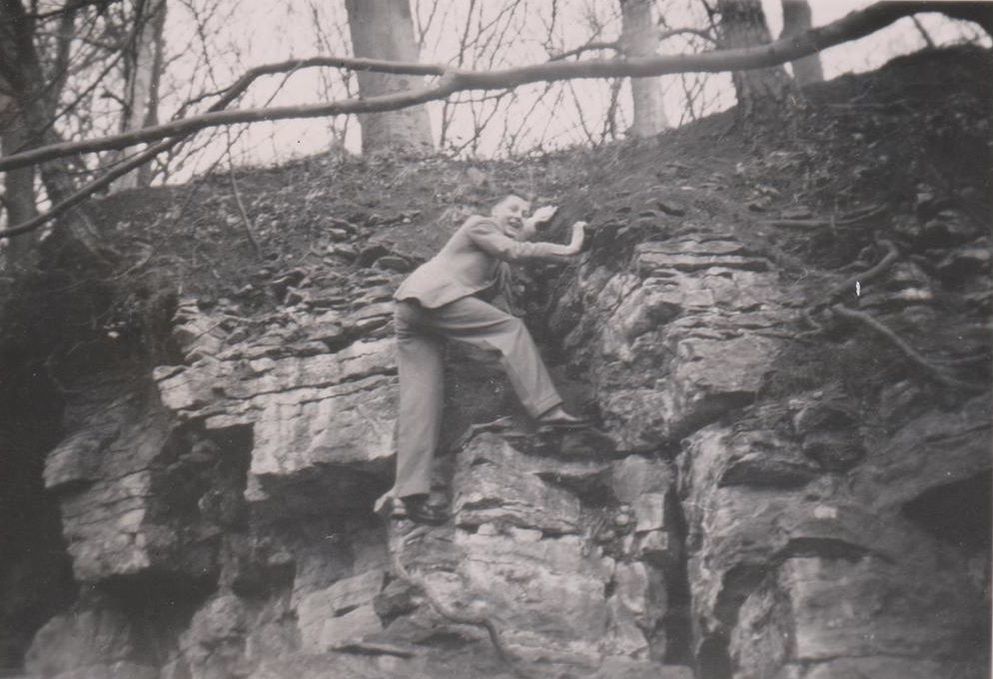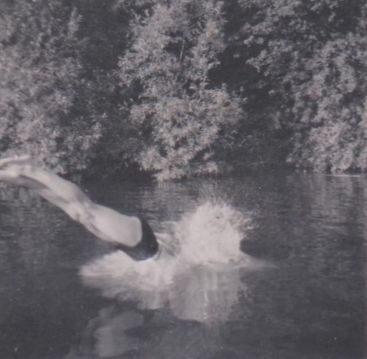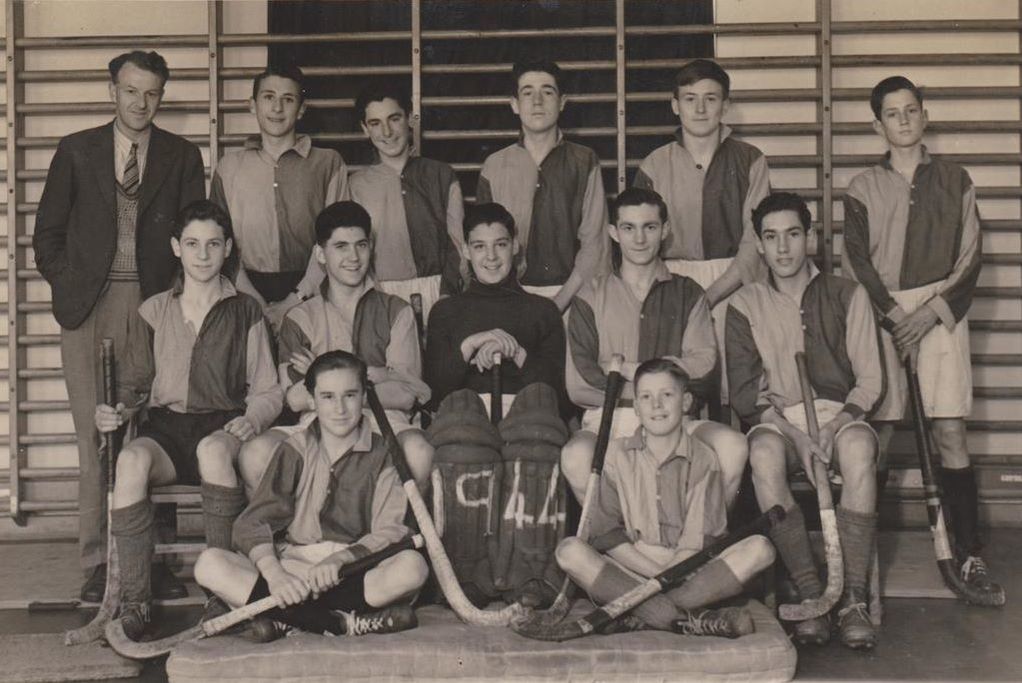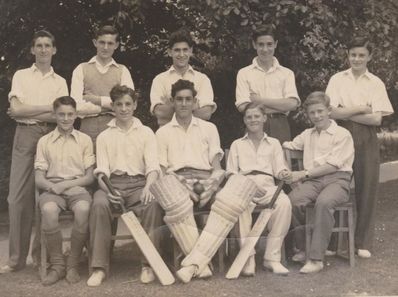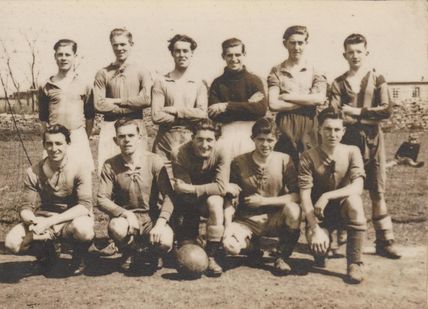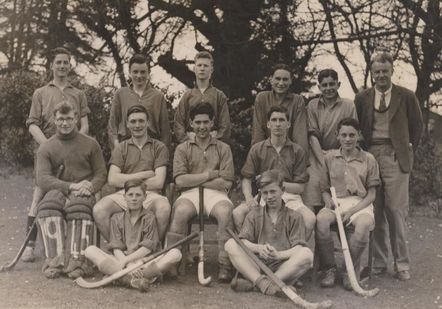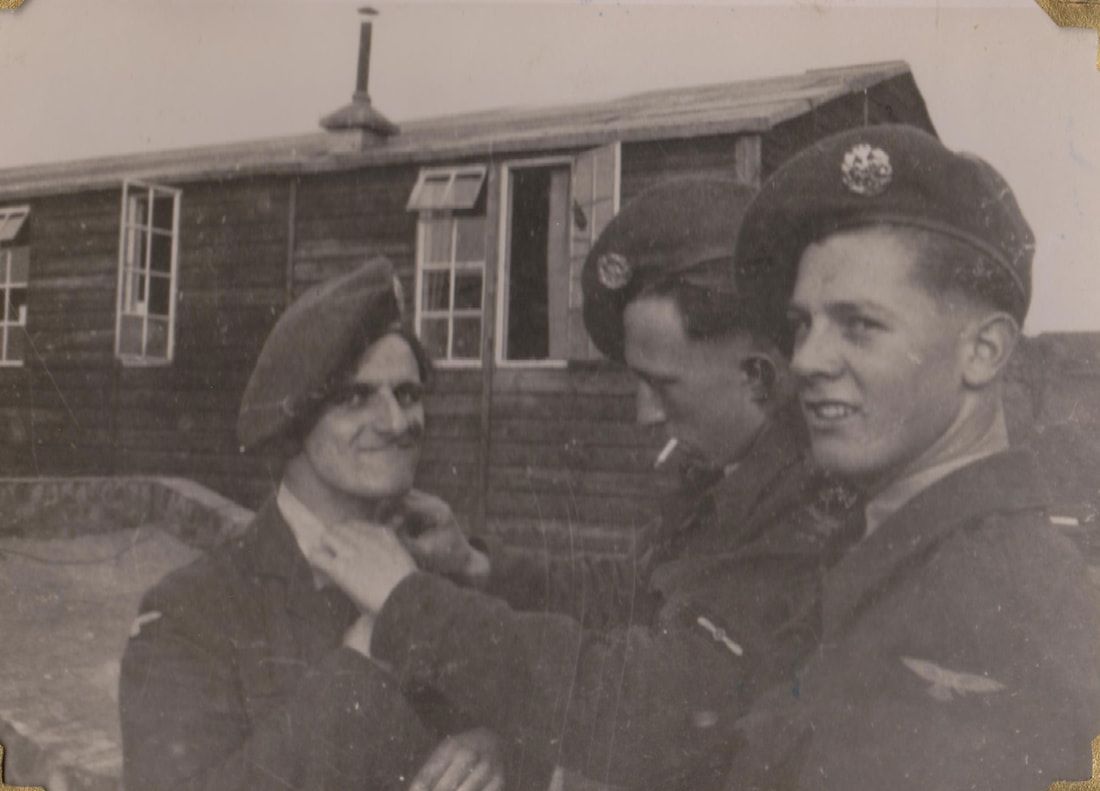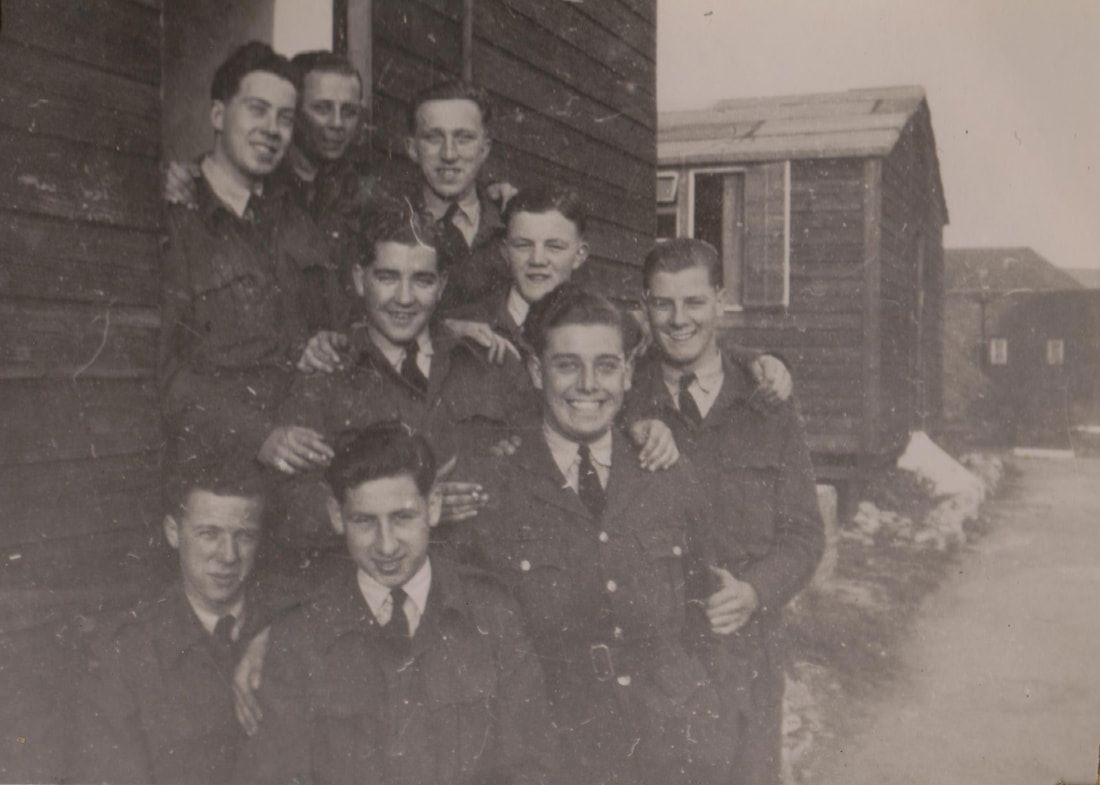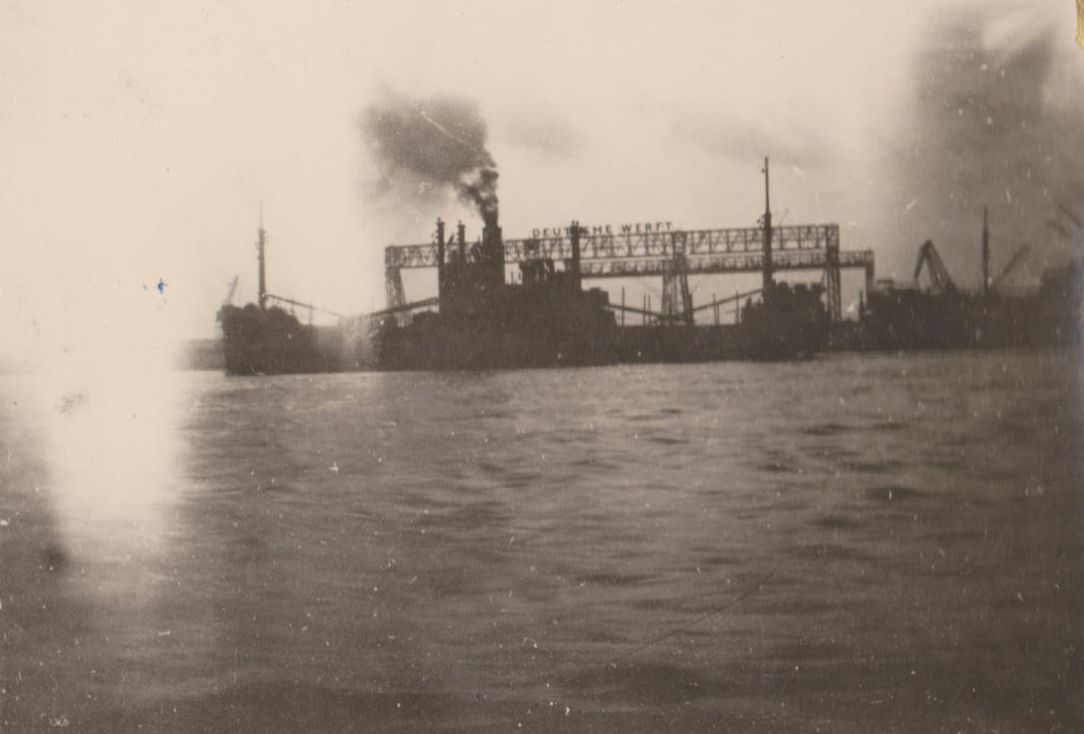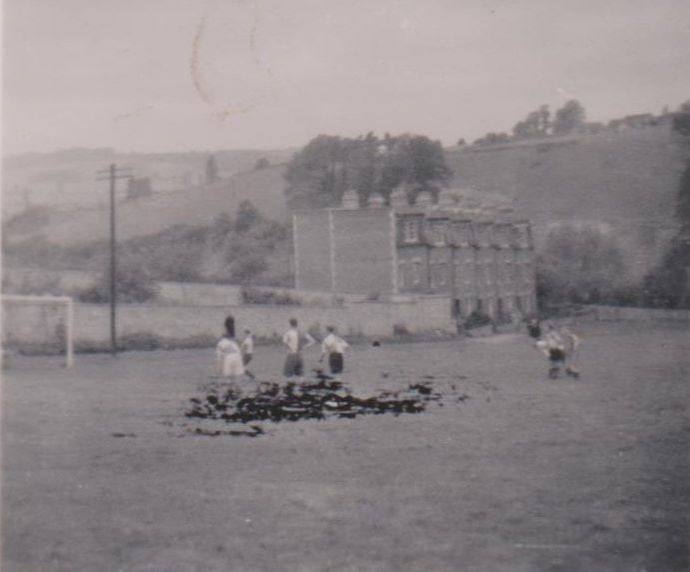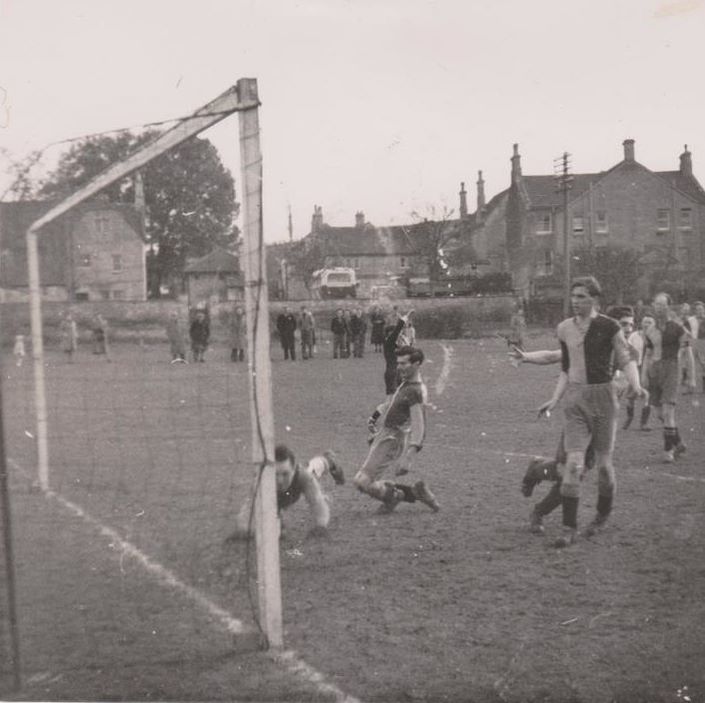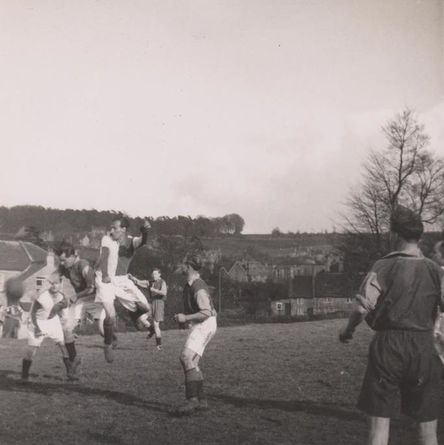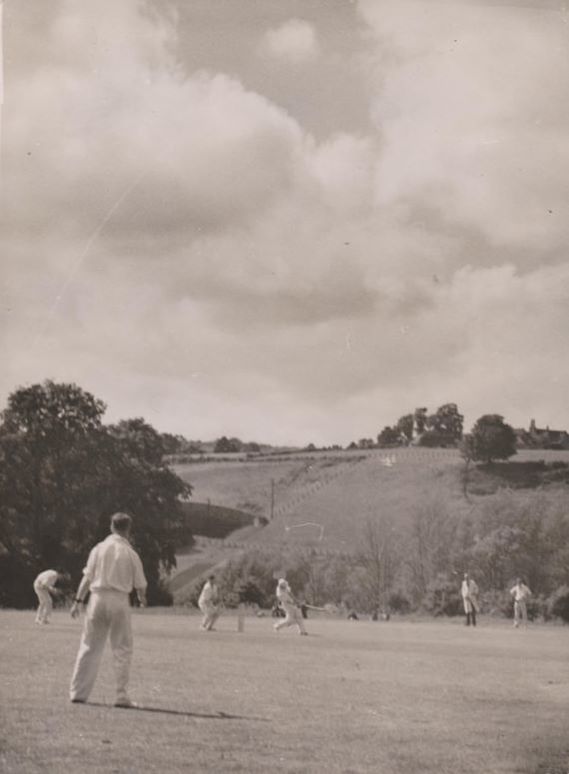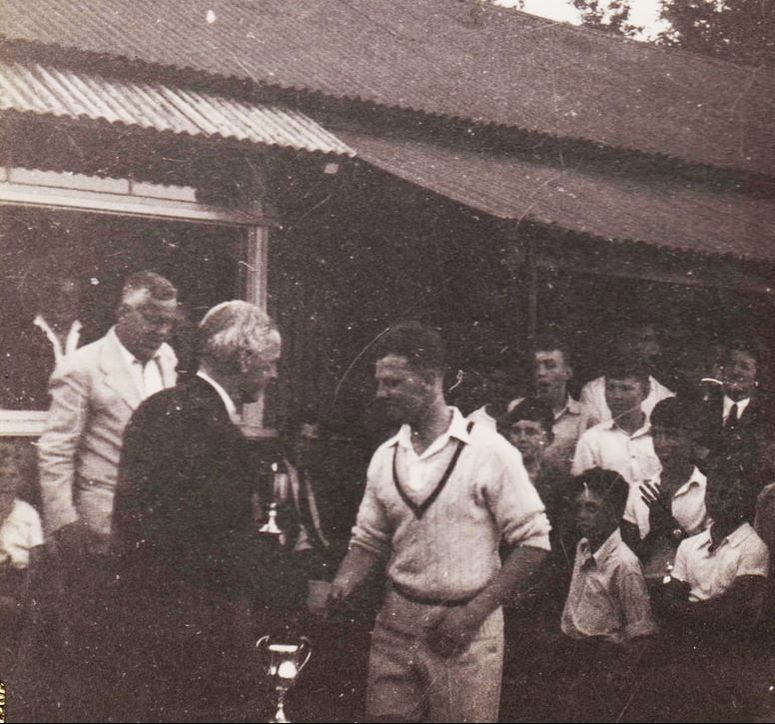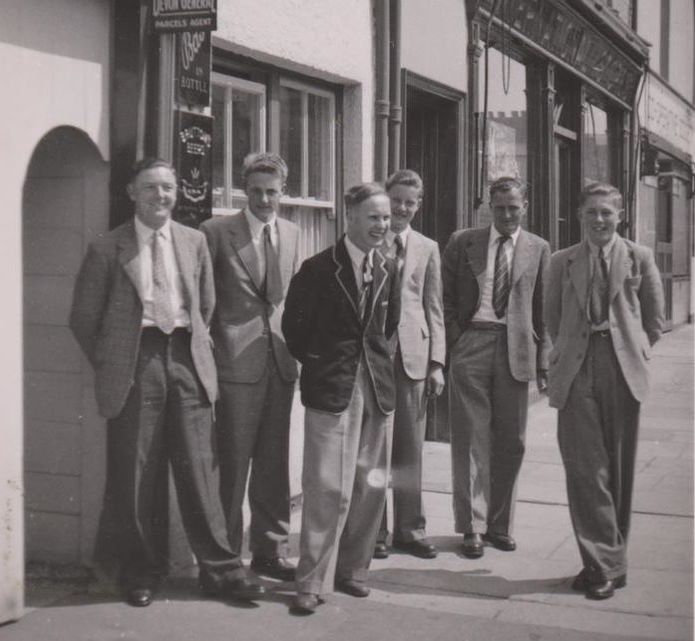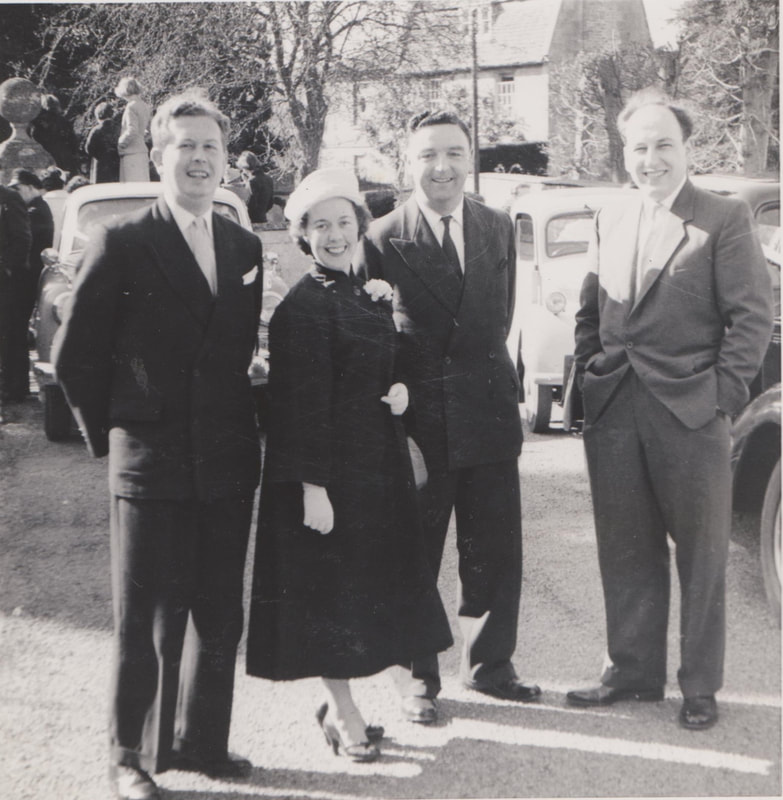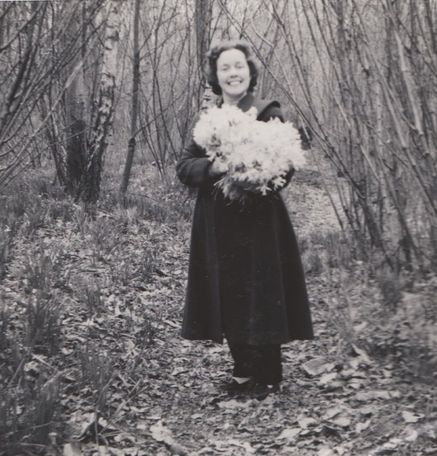Growing up in Post-war Alan Payne January 2019 Photos courtesy Ken Boulton
Those of us who are old enough will remember how our childhood was freer and more exciting than that of the present generation. There are many causes: children seem to be more precious when we have fewer, there is much more in our homes to keep us amused, and litigation has caused local authorities and individuals to restrict areas of potential danger. Of course, there is a loss: the exhilaration of discovering and overcoming the world around us. These photographs by Ken Boulton in the 1940s and 1950s show a society which has largely disappeared, which is why they are such a unique collection.
Ken Boulton's childhood seemed like that of most boys. He lived for sport and was keen on hockey, cricket, football and athletics. But, like other boys of the time, it was rather artificial because the whole of Ken's education at Chippenham Secondary School was during the Second World War. At the time, the young men in the photos were being educated to go to war, although the photos below and below right show Ken's interests at school.
There is a glimpse of this in Ken's early photos because the football team shown above (bottom left) was the Thornypits Association Football team of young servicemen stationed at the military hostels built there. Ken's schoolboy years were quickly followed by active military service when, as a seventeen-year-old, Ken was conscripted for eighteen months National Service in 1948, starting at Catterick.
National Service in the RAF at Hut B, South Cerney September 1948
Ken did most of his service at South Cerney, Cirencester, but some of the intake followed up training by a spell of duty in Germany, in the years after the war and during the Berlin airlift which started in June 1948. Below left: and Right:
Football in Box
Above all, it was sport that interested Ken, in those days mostly limited to football and cricket, with occasional track and field events. Ken managed to produce some amazing action photos of village events on the Upper Part of the Recreation Field. Seen below left Box against Melksham in December 1949 showing Valens Terrace in the background before the Selwyn Hall and car park were constructed.
Above all, it was sport that interested Ken, in those days mostly limited to football and cricket, with occasional track and field events. Ken managed to produce some amazing action photos of village events on the Upper Part of the Recreation Field. Seen below left Box against Melksham in December 1949 showing Valens Terrace in the background before the Selwyn Hall and car park were constructed.
Below Left: Jacobs scores a goal in the match between Box and Compton Bassett on 11 March 1950.
Below Right: Box Rovers against Blackfords in 1951 with Ron Bray scoring from a corner for Box.
Below Right: Box Rovers against Blackfords in 1951 with Ron Bray scoring from a corner for Box.
Box Cricket Club
Perhaps Ken's achievements as a cricketer were even more significant than his football achievements. He started playing for the Box club in 1948 as a future captain and all-rounder of high promise.[1] For the next six years he either topped the batting or the bowling figures for the club. In 1949 he scored a maiden half-century batting at number seven and his performances saw him rise up the batting order until he scored a full century batting at number three at the end of the season. In 1953 he was appointed captain of the First Eleven and continued to lead the side until the 1961 season.
Perhaps Ken's achievements as a cricketer were even more significant than his football achievements. He started playing for the Box club in 1948 as a future captain and all-rounder of high promise.[1] For the next six years he either topped the batting or the bowling figures for the club. In 1949 he scored a maiden half-century batting at number seven and his performances saw him rise up the batting order until he scored a full century batting at number three at the end of the season. In 1953 he was appointed captain of the First Eleven and continued to lead the side until the 1961 season.
Above Left: Cricket on the Rec; Top Right: Box Cricket Club winning the Wiltshire Six-a-Side Tournament in July 1956 with a team comprising Ken Boulton, K Keene, J Hope, J Harding, F Walker and D Lamb. Lower Right: Away from the village, the cricket club at Exmouth 1953 showing left Len Weeks, Brian Weeks, Brian Fuller, unknown, Ted Simpkins and Ken Boulton.
And then, as happens, romance came his way in the form of Maureen May from Wharf Cottages, and they married in 1957, photographed left, with Pete Milsom best man. Right: Maureen in the daffodil fields at Newent, Gloucestershire, in April 1959.
And then, as happens, romance came his way in the form of Maureen May from Wharf Cottages, and they married in 1957, photographed left, with Pete Milsom best man. Right: Maureen in the daffodil fields at Newent, Gloucestershire, in April 1959.
But once a lad, always a lad and Ken helped to promote and run the Boys Club which opened in the Jubilee Centre, Market Place. His younger brother Brian was a leading member. Ken showed a mature side in 1960 when older members of the parish were decrying the conduct of local teenagers. As club leader he criticised members of the public who were always so ready to run down the boys.[2] He argued that, although the Bingham Hall was helpful, it would be a God-send (for the boys) to have their own premises with separate rooms to carry on their varied activities.
Reference
[1] Donald Bradfield, A Century of Village Cricket, 1964, p.66
[2] Parish Magazine, May 1960
[1] Donald Bradfield, A Century of Village Cricket, 1964, p.66
[2] Parish Magazine, May 1960
